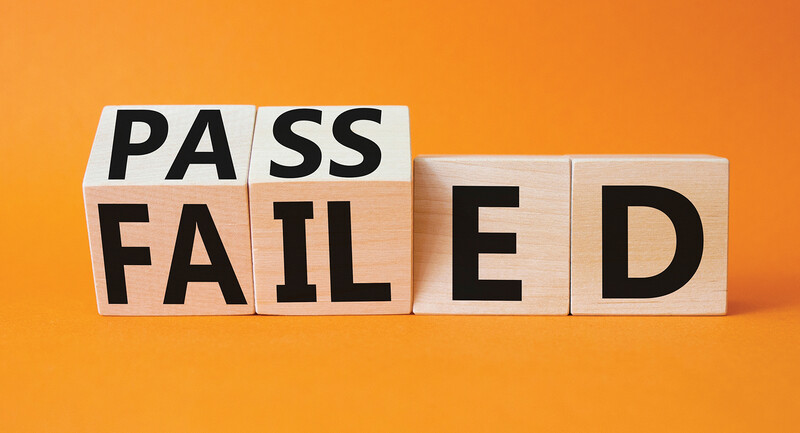Educators want to foster meaningful and joyful engagement in learning, promote mastery of new concepts and skills, and support healthy, balanced students. But sometimes our daily policies and practices can get in the way of these goals.
Imagine if, in the working world, your boss told you to expect a test later this week, but that you won't know exactly what will be on the test, you can't use any of the resources that you normally rely on (computers, colleagues, etc.), you cannot ask questions, you will have limited time to complete it, and your results will impact your next bonus. That doesn't sound like a recipe for success for you or the boss.
But, isn't this what we so often do to our students when assessments focus too heavily on memorization, do not incorporate any student voice or choice, and do not allow for redemption or revision?
At Challenge Success, a nonprofit that I cofounded based on my research at Stanford University's Graduate School of Education, we work with schools across the country to make practical and effective changes to better support student learning and well-being. In our school survey research, students regularly report that assessments, particularly tests and quizzes, are a major source of stress at school. Traditional quizzes and tests, especially those where students select responses instead of constructing their own answers, can only show so much about what a student knows. Students can guess or copy answers without actually understanding the material in depth.
As educators, we won't know if a wrong answer represents a careless error or signifies a larger gap in understanding. Too often, traditional assessments result in "teaching to the test," a lack of deep learning, widespread cheating, and even burned-out students.
Here are a few small and not-so-small assessment practices that Challenge Success has helped schools implement to more effectively support students on their journey towards deeper learning and mastery.
- Use multiple forms of assessment that align with learning goals in each unit. As Jay McTighe explains, a single test is like a snapshot, while a series of assessments is like a photo album. A snapshot represents one moment in time, where perhaps a student may not perform her best. Using a variety of assessments in a unit allows a more comprehensive and accurate representation of a student's learning. These may include quizzes to check for understanding, including short answer questions where students show their work, along with performance-based assessments such as research papers, lab reports, Socratic seminars, oral presentations, learning logs, and student interviews and conferences. Incorporating student voice and choice in selecting the types of assessments performed in the unit can lead to even deeper engagement with learning.
- Consider eliminating midterms and/or final exams. Research by John Hattie and Helen Timperley shows that shorter, more frequent, and varied assessments are a better way for students to solidify concepts and skills. On the other hand, high-stakes, cumulative exams can cause undue stress and are not as effective at measuring deeper learning.
- Allow students to self-assess and engage in peer review and revision when possible. When teachers provide students opportunities to practice evaluating themselves and to give and receive feedback with peers, this more authentically replicates the kind of work they will do in college and in their careers. Ultimately, we want students to be able to assess their own skills and performance and revise appropriately, whether in K–12, college, or on the job.
- Revise late work and "zero" policies. Doug Reeves makes the case that giving a zero is mathematically worse than giving a grade of F, and certain students may never be able to achieve passing grades when they have zeroes on their record. If the work is important enough to assign, we should hold students accountable for doing it, even if it is late.
- Allow students to do test corrections to show they understand their mistakes. If we are using assessments to promote learning, it doesn't make sense to give a unit test and then move on. Make sure students understand what they got wrong and can demonstrate that they know how to correct their errors. Have them re-do only the sections on the test where they struggled.
- Refrain from grading the first assignment(s) each semester. Many schools and colleges hold off on giving grades in the beginning of the year. They return essays, projects, and tests with ample comments—but no grades—and ask for revisions. This can lower stress and allow students to focus on the learning instead of just the grade.
- Diversify teaching strategies to include rigorous project/problem-based learning as part of each unit. Assignments that engage students to address real-world problems or result in a product that is shown to a real audience can motivate students to do better work and mimic the kind of learning and assessment that takes place outside the classroom.
One of the mantras that I share with students in my curriculum design class at Stanford is to include " opportunities for voice, choice, revision, and redemption." Giving students a say in how they are assessed can raise student engagement. Creating policies that honor revision and redemption can greatly increase the quality of student work and can lead to deeper learning.
From our work with more than 500 high-performing schools, we know that teachers do not typically just flip a switch and change how they assess students overnight. Schools often need to go slowly and offer time for discussion and debate among faculty along with professional development to support teachers in crafting different types of assessments. But teaching is about what students learn, not what they earn. As educators, we must implement alternative assessment practices that match this goal.








